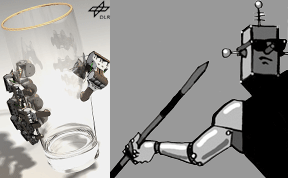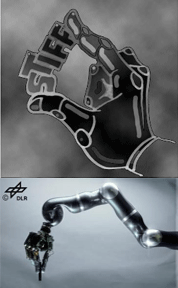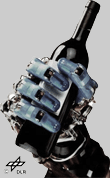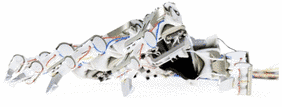

|
VIA Robotics and Control Variable impedance actuation has become increasingly popular in the design and control of novel robotic mechanisms. Variable impedance actuators (VIAs) promise many benefits for the next generation of robots, including (i) increased safety in settings where there is human-robot interaction, (ii) increased dynamic range and (iii) increased energy efficiency when interacting with the environment. However, despite these benefits, there are still a number of challenges associated with deploying such actuators to the current generation of robots. One major problem is that of how to control such mechanisms, and in particular, how to best use variable impedance so that the benefits (such as compliance) are realised, while compromise on other aspects of performance (such as precision) is avoided. In this part of the project, we address the control issues encountered for robots with variable stiffness. In particular, we focus on two aspects of the problem (i) optimal control methods suitable for exploiting the natural dynamics of a variable stiffness system, and (ii) methods for transferring impedance modulation strategies from behavioural measurements of humans to robotic systems. UEDIN have developed simple robotic variable-impedance systems on which we demonstrated optimal methods for exploiting variable impedance actuation, in order to verify the benefits of variable stiffness. In addition, UEDIN has developed a new approach to optimal control directed at resolving timing issues, including optimal selection of movement durations and timing of intermediate task goals. In the meantime, DLR has developed a hyperrealistic variable-impedance robotic hand-arm system "HASy". This system integrates 52 dc motors for antagonistic arm and hand movement, allowing separate setting of the mechanical stiffness of each of its joints.
To transfer the human stiffness behaviour to this robotic system, IDSIA investigates inverse reinforcement learning (IRL), or cost function identification. The first deals with global search problems, e.g. deciding which control trajectories avoid obstacles and bad local optima (such as getting stuck behind an obstacle). To solve them we use direct search in a space of indirect encodings of solution candidates, such as recurrent neural networks. In the second topic, IDSIA has developed an evolutionary approach to IRL, and demonstrated its feasibility on a number of simulated benchmark tasks. The framework was applied to experimental data from various human movement studies, where it extracted optimality principles (and thus building blocks of control laws) from trajectory data obtained under laboratory conditions. This key step should allow us to transfer control principles of humans to the biomimetic DLR robot system. |


| |



